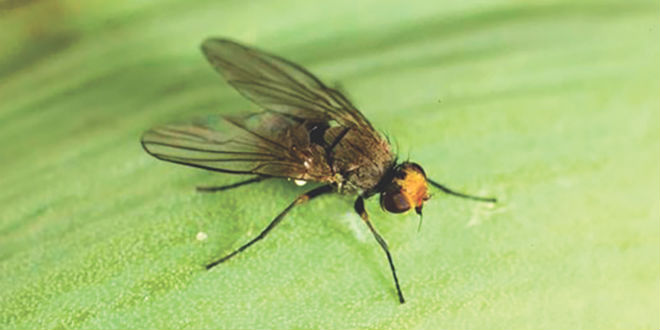Jun 13, 2016Pennsylvania ground zero for another invasive pest
Penn State University has confirmed that the allium leafminer (also known as the onion leafminer) was found on infested leeks and onions collected in December 2015 from Lancaster County, Pennsylvania. It’s the first confirmed allium leafminer infestation in the Western Hemisphere.
The allium leafminer reportedly infests species in the genus allium. Leeks tend to be described as the most damaged host, but infestations also have been reported in onion, garlic, chive, shallot and green onion, according to Penn State.
The allium leafminer was first described in 1858 in Poland, and is native to Poland and Germany. Recently, the geographic range has rapidly expanded. It is now present throughout Europe, reaching the United Kingdom in 2004. It has recently been reported in Asia, Turkey and parts of Russia and Turkmenistan, according to Penn State.
Allium leafminers overwinter as pupae in plant tissue or surrounding soil. Adults emerge in late winter into spring, and lay eggs at the base of plant stems. Larvae mine leaves and move downward into the base of leaves or into bulbs, where they pupate. Pupae may move into soil. These first-generation pupae develop into adults that emerge in the autumn. This second generation of adults lay eggs into allium plants, which develop through the larval and into the pupal stage. These second- generation pupae will overwinter, according to Penn State.
Adult females make repeated punctures in leaf tissue with their ovipositor, and both females and males feed on the plant exudates. Leaf punctures arranged in a linear pattern toward the distal end of leaves may be the first sign of damage. Leaves can be wavy, curled and distorted. Larvae mine leaves and move toward and into bulbs and leaf sheathes, where they pupate. Leaf mines are most evident in species with thin leaves, like chives. In species with larger leaves, it is often necessary to peel back the leaves to find the insect. Both the leaf punctures and mines serve as entry routes for bacterial and fungal pathogens, according to Penn State.
The literature suggests organic and garden production systems tend to be most at risk, according to Penn State.
Management
Penn State made the following management suggestions:
- Use yellow sticky cards or yellow plastic bowls containing soapy water to capture adults.
- Cover plants in February, prior to the emergence of adults, and keep plants covered during spring emergence. Avoid the adult oviposition period by delaying planting (after mid-May in Poland). Cover fall plantings during the second- generation flight. Grow leeks as far as possible from chives. Also, continuous cultivation of allium species provides the pest with a continuous food source.
- Systemic and contact insecticides can be effective. EPA registrations vary, however, among allium crops. Check labels to ensure the crop is listed, and for rates and harvest intervals.
- If you think you’ve observed damage or a life stage of the allium leafminer, contact your local Extension or ag department office.
— Matt Milkovich, managing editor















